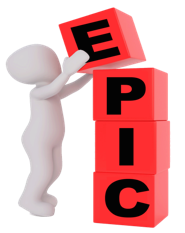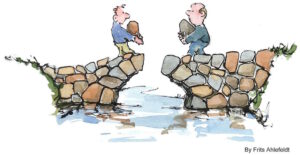The secret to most effective meetings lies in 4 key dimensions
More often than not I come across professionals who complain that meetings they encounter tend to be ineffective because they drift away from the original objective of the meeting. Attending people get lost in interesting discussions driven by their curiosity and involvement with the content of the topic. And this gets even worse when the person chairing the meeting is also content driven.
 For me a simple rule helps me to turn meetings I facilitate into a positive event where the effectiveness of the meeting is strongly increased. I call it the E.P.I.C. rule.
For me a simple rule helps me to turn meetings I facilitate into a positive event where the effectiveness of the meeting is strongly increased. I call it the E.P.I.C. rule.
Let me share what I mean by that.
Meetings are complex, dynamic events. It is my experience that to run an effective event at least 4 dimensions need to be addressed simultaneously: Emotions, Processes, Interaction between people, and last but not least the Content of the meeting. You can probably already see where this is going.
Usually, the main focus is on the last point. Yet, paying attention to all four will, in my experience, significantly improve the quality and effectiveness of any meeting.
So, what does E.P.I.C. stand for here?
[su_dropcap style=”light” size=”3″ color=”#23a2c2″]E[/su_dropcap]
motions and feelings:
Be assured emotions are always present; sometimes more, sometimes less prominent. They can range from being happy, bored, irritated, frustrated to being angry, distracted, and a lot more. Especially for the chairperson of the meeting it is important to pay attention to the state of emotions in the room: is it ok or are emotions getting in the way? This is not only about emotions of the other people around the table or in the virtual meeting, but also for their own! It is crucial to address emotions explicitly when they are interfering.
How to recognise E? Think about observing the body language of the participants. Facial expressions e.g. can clearly say something else than the words used by a person. Addressing this in a positive way where you describe what you see, can help to get the emotions on the table. This can be done by the chairperson, but also by all other participants, of course.
[su_dropcap style=”light” size=”3″ font-color=”#23a2c2″]P[/su_dropcap]
rocesses and structure:
Both are important and a lack of either form a fertile ground for wandering off in side discussions. So you have to ask yourself: Do we have clarity amongst the attendees on what structure and procedures we use? Is everyone aware of and on board with the agenda and the items to be discussed?
To optimise P, remember processes already start with structuring/preparing a meeting (proper agenda, prework, clear goal for an agenda topic, action lists etc.) and continues with the process used during the meeting; e.g. using a structured approach for decision making and a brainstorm approach for a certain topic.
[su_dropcap style=”light” size=”3″ font-color=”#23a2c2″]I[/su_dropcap]
nteraction and relations between people involved:
These are always in the centre of successful and effective meetings and there are many possible sources of interferences. Often hierarchy or cultural differences might play a role in the way how people interact. One example: whereas in some countries a very direct approach in communication is normal, this is perceived as being too blunt in others.
For improving the I, let me point you to Stephen Covey who stated clearly that the balance of an “emotional bank account of a relation” is an important driver for the actual interaction and behaviour. Also in this area trust amongst the people involved is a very important driver and needs to be nurtured.
[su_dropcap style=”light” size=”3″ font-color=”#23a2c2″]C[/su_dropcap]
ontent:
This is central to each and every meeting, of course. Why else would you have a formal meeting? Often people come to meetings and start “preparing” themselves just as the meeting starts. Another pitfall encountered regularly is that the chairperson of the meeting thinks that he/she needs to be the specialist knowing all the details. And sometimes they even are the experts. When this is the case, it is my experience, that the other dimensions -the E,P and I- get especially little attention.
So, for an optimal C, be prepared well enough in advance, know enough about the topics that are discussed, but not necessarily all of it, and request the same from those you invite to the meeting.
Conclusion:
In summary my nugget for you is this: Having effective meetings requires focus on all 4 dimensions of the E.P.I.C approach where they all get sufficient attention all the time. So I am confident that sticking to the E.P.I.C. rule means you can enjoy the results and will create a positive mood in you and the other attendees!
And if you feel like discussing or commenting this, feel free to leave a comment below or contact me direct for a detailed and more personal discussion.



